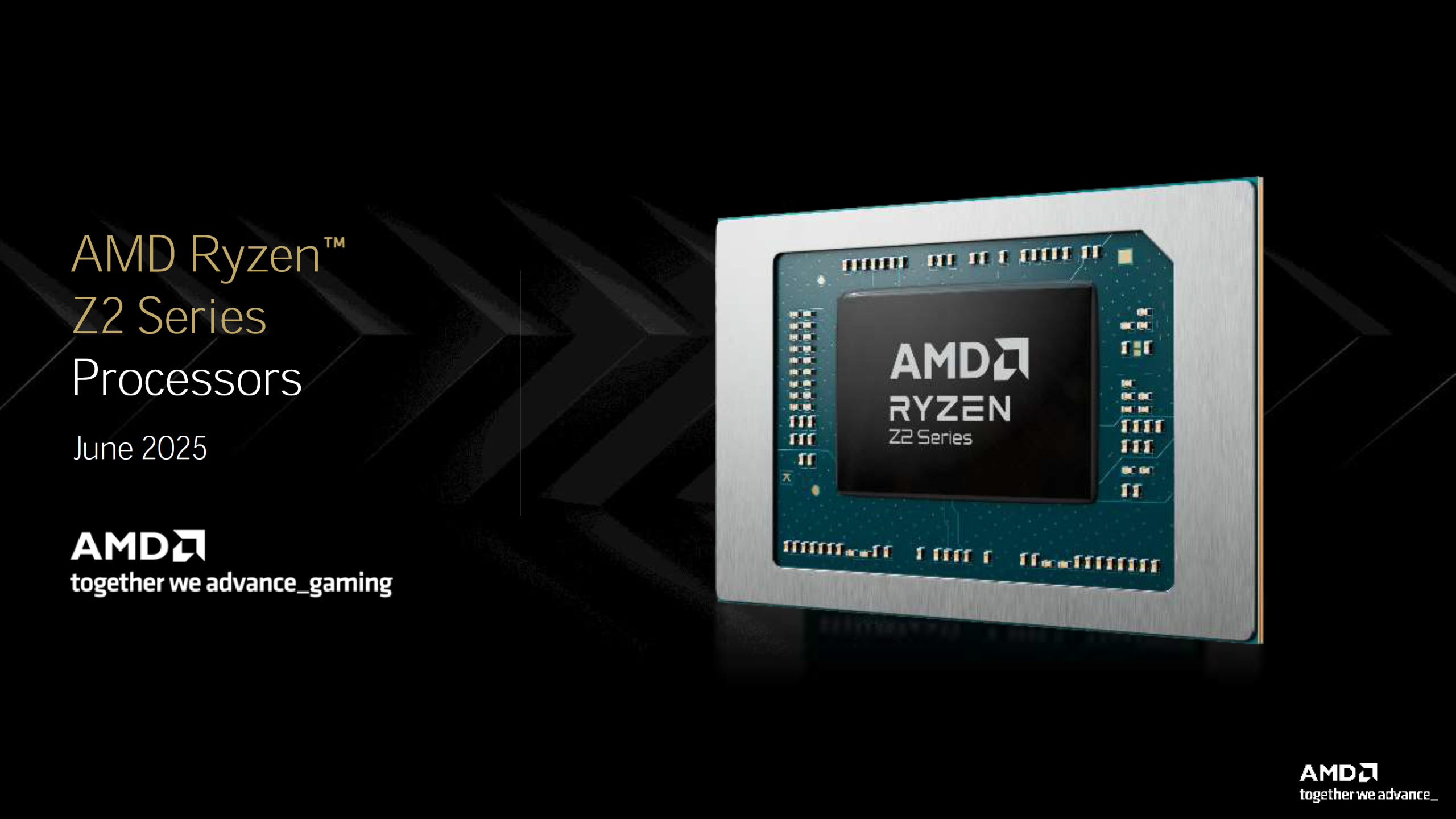AMD has officially expanded its Ryzen Z2 lineup, delivering both ends of the performance spectrum with the newly introduced Ryzen AI Z2 Extreme and Ryzen Z2 A. 
These additions cater to both high-end handheld gaming and budget-friendly performance devices, pushing AMD’s presence in the portable computing market even further.
The Ryzen AI Z2 Extreme is an enhanced version of the Z2 Extreme, now featuring a dedicated NPU (Neural Processing Unit) designed for AI workloads. While its CPU and GPU specs are nearly identical to the non-AI Z2 Extreme-with 8 cores and 16 threads on the cutting-edge Zen 5 architecture and 16 RDNA 3.5 GPU cores-the NPU allows it to handle up to 50 AI TOPs, opening the door for smart upscaling, background tasks, and future AI-assisted gaming optimizations.
Memory support has also been boosted, with speeds up to 8000 MT/s, the highest among the Z2 series. These chips operate in a 15–35W TDP range, promising high performance while still targeting portable thermal envelopes.
Meanwhile, at the other end, AMD introduced the Ryzen Z2 A-a budget-friendly chip based on the older Zen 2 architecture. It comes with 4 cores and 8 threads, and an RDNA 2 GPU with 8 cores. While it lacks the punch for AAA gaming, it’s an energy-efficient APU designed for entry-level handhelds and could shine in scenarios prioritizing battery life and cost-efficiency. It’s reminiscent of the custom APU found in the Steam Deck and operates in the ultra-low 6–20W range.
Interestingly, AMD’s decision to revisit Zen 2 here isn’t just cost-cutting. The architecture has proven remarkably efficient for power-constrained devices, making it a logical pick for long battery life. And despite some skepticism online, it’s not just a “Mendocino rebrand”-closer analysis shows it may share more DNA with Rembrandt or Steam Deck-class hardware.
AMD seems to be hedging its bets: pushing AI and high frame rates on one side, while making sure gamers and users on tighter budgets still have a solid option. Some users argue the AI NPU inclusion is marketing fluff unless it’s used for real upscaling benefits, but others see it as a future-proof move, especially with Windows and gaming shifting toward AI integration.
In short, AMD now offers a diverse Ryzen Z2 portfolio ranging from ultra-efficient chips for budget handhelds to AI-enabled powerhouses for enthusiasts. Expect to see these chips powering the next wave of handhelds and potentially thin-and-light laptops through 2025.